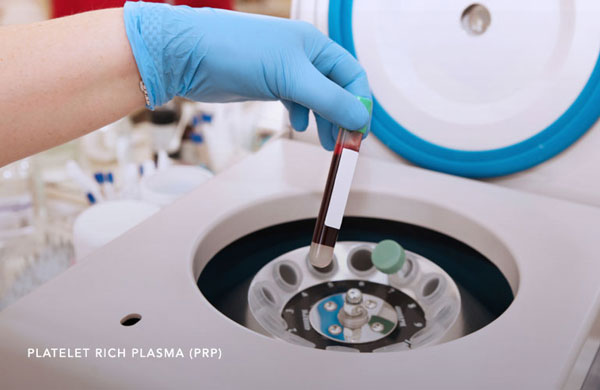
orthopedic injuries and degenerative conditions are the most common cause of severe long-term pain and disability. The majority of injuries do not heal well with conservative management, and frequently require surgery. Treatment of degenerative arthritis is primarily symptomatic and may eventually require joint replacement.
Restorative procedures like Platelet Rich Plasma may help to facilitate healing of damaged muscles, tendons, ligaments, and cartilage; and reduce pain and improve function with or without surgery.
Platelet Rich Plasma (PRP)
PRP is a revolutionary procedure that has been used successfully for the past two decades in oral surgery, neurosurgery, sports medicine and orthopedic s to promote wound healing. Many famous athletes have been treated with PRP for various problems like tendon injuries and strained knees. Usually these injuries are treated with medication, physical therapy and sometimes surgery. Recipients credit PRP therapy with their ability to return to play quickly.
What is PRP?
Our blood contains platelets and specific growth factors that are designed to heal injuries. Research confirms the beneficial effects of PRP are due to the high concentration of 20 growth factors, and proteins that are important in healing injuries. Studies report that PRP therapy can recruit to create new blood vessels, to nourish the new tissue so that it survives and grows strong.
How is it made?
A small amount of blood is taken from your arm. The blood is spun to separate the platelets from the rest of the blood components and concentrate the numerous growth factors to harness their healing power.

How is it used?
PRP therapy may stimulate repair of damaged tissues and reduce pain. It is either injected into the injured area or used after surgery. By extracting, concentrating and injecting platelet rich plasma into orthopedic injuries PRP can potentially improve the healing process, and reduce pain. Research is evaluating the effectiveness of PRP therapy.
What conditions can be treated with PRP Therapy?
It may be used in the knee to treat acute ligament and muscle injuries. Studies underway to prove that PRP improves the healing process. Studies have shown that PRP can accelerate bone and soft tissue healing, and cartilage regeneration. But more studies are needed.
PRP is increasingly being studied for the treatment of degenerative arthritis of the knee, and to aid in healing of fractures.
